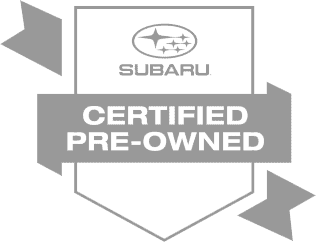Freehold, Manalapan, Marlboro and Englishtown Subaru owners can perform one simple task to improve their Subaru owner experience all around: check their tire pressure and inflate accordingly.
Tire pressure sounds like such a minor detail, but it can actually have huge consequences on your Subaru's performance and reliability. Looking at day-to-day driving, the correct tire pressure can improve fuel mileage as well as braking performance, acceleration, and cornering grip. In the long run, too low or too high of tire pressure can cause issue in your vehicle's braking and suspension systems. It could even cause a blowout on a major highway!
Since you likely want to enjoy driving your Subaru as much as possible and do not want to deal with avoidable maintenance, you can use the following guide to monitor your Subaru's tire pressure:
Following Factory-Recommended Pressures 
Every Subaru comes equipped with factory-installed tires. These tires are used in the quality control and performance testing of vehicle models. In other words, Subaru has a good idea of how the car and the tires work together. Any time you use a non-recommended set of tires, you are unable to benefit from this factory knowledge and may end up with unpredictable performance.
We mention all this because the stock tires on your Subaru have recommended inflation pressure ratings listed on the driver's side door sill. You may also be able to find the recommended pressure inside your vehicle's owner's manual. This information is likely to be identical to the max PSI rating on the sidewall of the tire, but if there is a contradiction you should ask a licensed Subaru technician as to which one is more appropriate.
Generally, your tires should be at 32-35 PSI cold pressure, but this number may vary according to your model.
What "Cold Pressure" Means
When you read the max PSI rating of your tires, this figure refers to cold pressure measurements. Simply put, cold pressure means the pressure measured inside a tire that is cold.
What would make a tire not cold? Driving it, for one. Driving on your tires creates a tremendous amount of rolling friction, which generates heat. Your tires can be a dozen degrees or more from their resting temperature after even a short drive.
Having your vehicle rest but parked in a warm area or in full sunlight can likewise make your tires warmer than 68 °F (20 °C), the established value of a "cold" tire.
So, to ensure that your tires are at the pressure they should be, let your vehicle rest and park it in the shade for several hours, preferably overnight. If it happens to be particularly warm out, such as 80 °F or above, you may need to park the vehicle in a covered garage to lower the tire temperature to cold pressure levels.
Inspecting Subaru Tire Wear 
Even following the PSI recommendations and keeping track of temperature, your tires could be over or under-inflated. You can observe this by looking at the treads:
You can track these changes by examining your tires every time before you drive.
Freehold, Manalapan, Marlboro and Englishtown Subaru owners who want the absolute best performance out of their tires can bring their vehicle to Freehold Subaru's certified service department. Book your appointment today!
Make an Inquiry
* Indicates a required field
Freehold Subaru
299 South St.
Freehold, NJ 07728
- Sales: 732-677-5112
- Service: 732-677-5112
- Parts: 732-677-5112
Hours
- Monday 09:00AM - 08:00PM
- Tuesday 09:00AM - 08:00PM
- Wednesday 09:00AM - 08:00PM
- Thursday 09:00AM - 08:00PM
- Friday 09:00AM - 08:00PM
- Saturday 09:00AM - 06:00PM
- Sunday Closed





